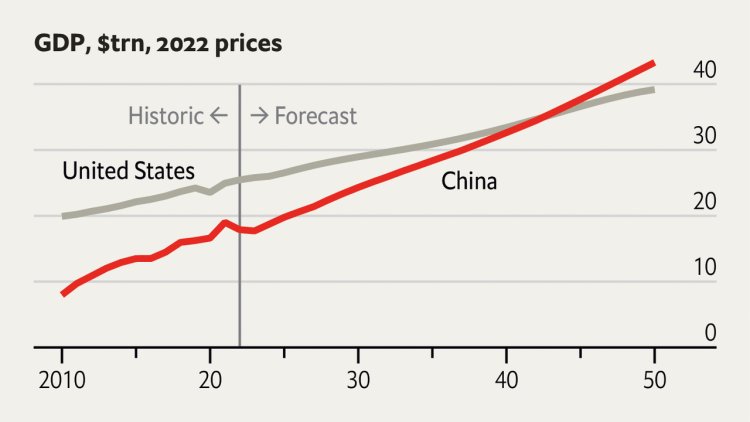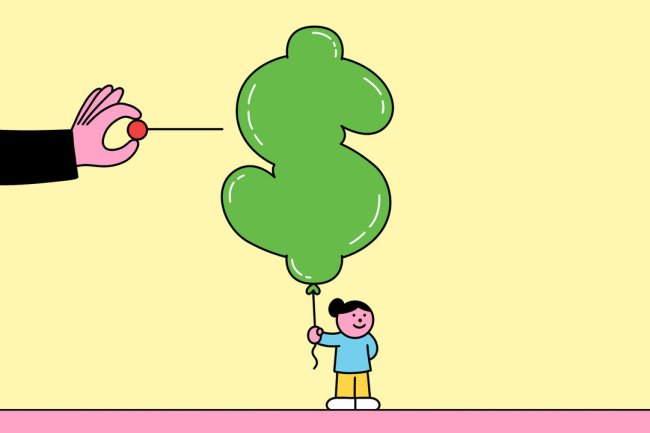China will become less populous, more productive—and more pricey
Our Carrie Bradshaw index: Where Americans can afford to live soloIn many cities even the most basic apartments are unaffordableTo read more of The Economist’s data journalism visit our Graphic Detail page.China’s weak recovery this year, and its dangerous flirtation with deflation, could delay the date on which it becomes the world’s biggest economy. The gap between American and Chinese GDP will be over $8trn in 2023, according to some forecasts. That is a bigger number than last year. According to the latest projections by EIU, our sister organisation, China may have to wait until the 2040s to overtake America. If China does ever ascend to number one, how will it get there? Its long-term economic trajectory will be governed by changes in three things: population, productivity and prices. Increases in China’s working-age population contributed significantly to growth in the past, but will not do so again. EIU expects China’s labour force to shrink by 12% over the next 20 years. The co


Our Carrie Bradshaw index: Where Americans can afford to live solo
In many cities even the most basic apartments are unaffordable
To read more of The Economist’s data journalism visit our Graphic Detail page.
China’s weak recovery this year, and its dangerous flirtation with deflation, could delay the date on which it becomes the world’s biggest economy. The gap between American and Chinese GDP will be over $8trn in 2023, according to some forecasts. That is a bigger number than last year. According to the latest projections by EIU, our sister organisation, China may have to wait until the 2040s to overtake America.
If China does ever ascend to number one, how will it get there? Its long-term economic trajectory will be governed by changes in three things: population, productivity and prices. Increases in China’s working-age population contributed significantly to growth in the past, but will not do so again. EIU expects China’s labour force to shrink by 12% over the next 20 years. The country can hope to squeeze a little more work out of its older cohorts, thanks to improved health, longevity and later retirement. But if the only thing that changed over the next few decades was China’s raw labour supply, its GDP would already have peaked (see chart).
Productivity offers far greater scope for improvement. For all its eye-catching technological feats, China is still a catch-up economy determined to assimilate knowledge from the rest of the world. American efforts to decouple from China will hurt, but not halt, its progress. China’s lagging firms also have much to learn from the country’s own leading enterprises. China’s state-owned enterprises, for example, have a lower return on assets than their private counterparts.
Nor has China run out of room for investment. Despite its heavy outlays on housing and infrastructure, the country has plenty of scope to increase the amount of machinery, equipment and other means of production available to its workers before its capital stock per worker reaches the levels of rich countries. All of these things—innovation, assimilation and accumulation—will help labour productivity grow by over 3% a year over the next two decades, according to EIU’s projections.
Still, these changes in China’s population and productivity might not be enough to lift its economy above America’s (see chart). A third factor—prices—could be decisive. Converted into dollars at market exchange rates, China’s GDP is now only about 60% the size of America’s GDP calculated at purchasing-power parity. That is because its prices and currency are relatively cheap: $18trn can buy more stuff in China than in America. (A Big Mac, for example, costs only 63% as much.)
The EIU expects China to become more expensive over time, as its prices evolve and its currency rises against the dollar. Over the next 20 years the yuan will strengthen by roughly 15%, EIU reckons. That will magnify the size of China’s GDP when converted to dollars at market exchange rates, helping it close the gap with America at last. China will become the world’s biggest economy by becoming a pricier one. ■
What's Your Reaction?













